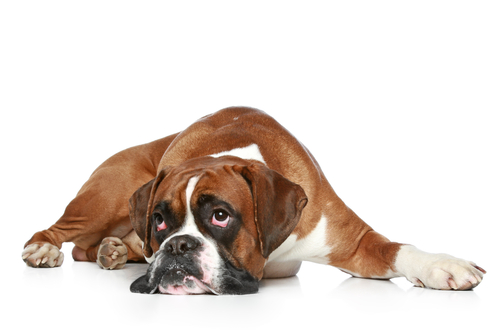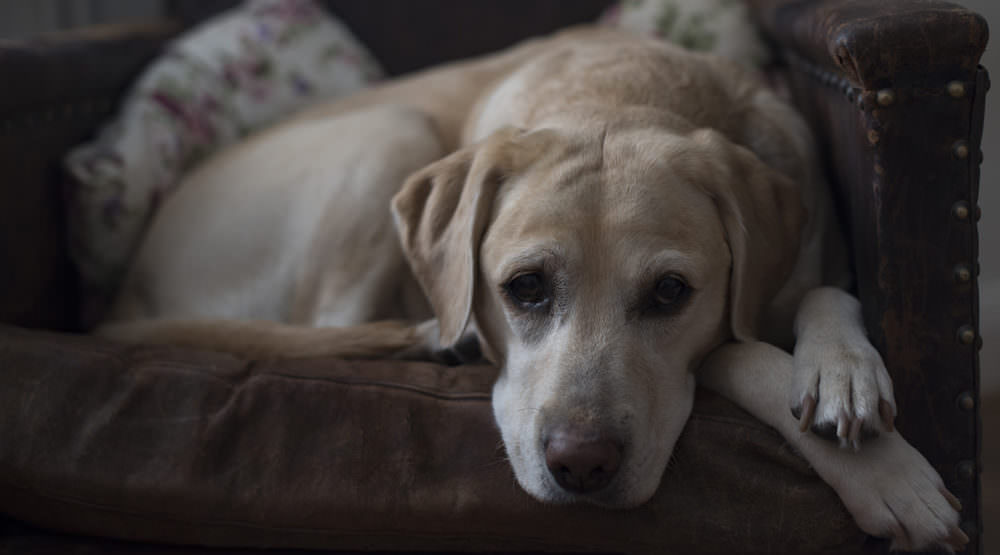Seasonal affective disorder (SAD) in human is characterized by episodes of depression during the period where day length is shorter. There have been many therapies tried to treat SAD in humans, ranging from light therapy to cognitive behavioral therapy. The people that suffer from SAD report significant impact to their quality of life.
Our dogs live closely with us and experience the seasonal changes much as we do. Dog owners report mood and behavior changes in dogs during the winter. Could it be that they too are affected by seasonal affective disorder?

Until recently there have been no animal models for seasonal affective disorder, but scientists believe that photoperiod influences the brain chemistry and behavior in many animals who typically breed seasonally.1 Newer studies using hamsters and grass rats have supported both changes in brain chemistry and brain structure in response to decrease light. 3 Scientists have shown that a part of the brain (the hippocampus) in hamsters actually shrinks during fall and winter and may be the reason for the depression. 2
Because dogs are even more emotionally complex than hamsters and live in such close proximity to humans, it is very likely that they too experience changes in mood and brain chemistry during periods of shortened daylight.
Light therapy has proven to be beneficial in some SAD affect humans, but there is no reliable prevention or treatment protocol for all affected patients. Medications, antidepressants, and melatonin have all been studied in humans, but none have proven be a completely effective intervention. 4 However, one study found Cognitive Behavioral Therapy sessions to be the most useful. 5

Cognitive Behavioral Therapy in nonverbal patients like dogs does present a challenge. However as an alternative, dog owners could prioritize training sessions and active bonding time in lieu of therapy sessions and potentially both parties could experience mood elevation and depression prevention.
Make time for your dog every day, especially in the winter. Keep his body and his mind active and be sure that he is getting plenty of sleep. Both of your brains will benefit and before you know it, the days will be longer again!.
For more information on keeping dogs happy, check out How Can I Make Sure My Dog Is Happy.
- Neurosci Biobehav Rev.2011 Jan;35(3):669-79. doi: 10.1016/j.neubiorev.2010.08.005. Epub 2010 Aug 26. Potential animal models of seasonal affective disorder.Workman JL, Nelson RJ.
- Horm Behav. 2011 Nov;60(5):520-8. doi: 10.1016/j.yhbeh.2011.07.021. Epub 2011 Aug 7.Short day lengths alter stress and depressive-like responses, and hippocampal morphology in Siberian hamsters.Workman JL, Manny N, Walton JC, Nelson RJ.
- Neurosci Lett.2015 Aug 18;602:17-21. doi: 10.1016/j.neulet.2015.06.038. Epub 2015 Jun Hypothalamic dopaminergic neurons in an animal model of seasonal affective disorder.Deats SP, Adidharma W, Yan L.
- Cochrane Database Syst Rev.2015 Nov 11;11:CD011271. [Epub ahead of print] Melatonin and agomelatine for preventing seasonal affective disorder. Kaminski-Hartenthaler A, Nussbaumer B, Forneris CA, Morgan LC, Gaynes BN, Sonis JH, Greenblatt A, Wipplinger J,Lux LJ, Winkler D, Van Noord MG, Hofmann J, Gartlehner G.
- Am J Psychiatry.2015 Nov 5:appiajp201515060773. [Epub ahead of print] Outcomes One and Two Winters Following Cognitive-Behavioral Therapy or Light Therapy for Seasonal Affective Disorder.Rohan KJ, Meyerhoff J, Ho SY, Evans M, Postolache TT, Vacek PM.
 Toledo, United States.
Toledo, United States.